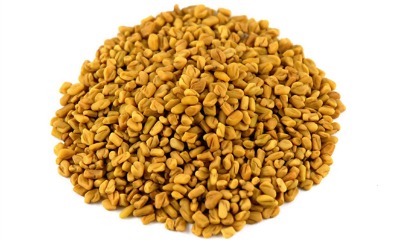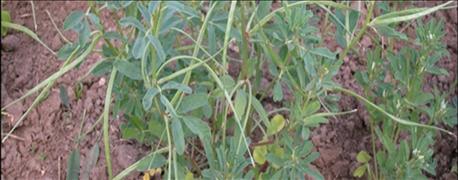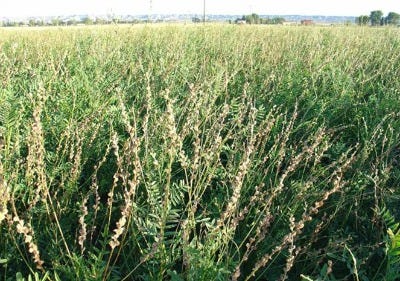
There are a couple of non-traditional forage crops many ranchers have never heard of that could be good options for hay down the road, Augustine Obour, soil scientist at the Kansas State University Ag Research Center in Hays, told attendees at the Feb. 17 Southwest Kansas Forage Conference in Garden City.
Sainfoin, a plant native to eastern Europe.
It is a perennial forage legume and can grow as tall as three feet. Even though stems of sainfoin appear to be big and coarse, they are actually soft and quite tasty to cattle, Obour said. In addition each stem has many leaflets, making the crop excellent for both haying and grazing.

FENUGREEK PODS: The pods of the fenugreek plant produce seeds that are used as a spice.
Sainfoin has good drought tolerance and winter hardiness and starts growing earlier in the spring than alfalfa. It is also resistant to the alfalfa weevil, he said.
It grows well in calcareous soil and is the legume component in many grass mixtures and in plantings for the Conservation Reserve Program. Additionally, it is a non-invasive species that provides excellent forage for horses on small acreages.
Sainfoin was first introduced to North America in the 1960s in the Northern Plains. Varieties were developed at Montana State University and Agriculture Canada. Renewed interest in the forage came min 2005, when research began at the University of Wyoming resulting in the release of varieties more suitable to the Southern Plains.
Sainfoin is suited to neutral to slightly alkaline soils and it prefers well-drained soils. It does not do well in heavy soils or under flood irrigation and seed needs to be inoculated with the appropriate rhizobium strain, Obour told producers.

SAINFOIN PODS: The Sainfoin plant produces long slender seed pods.
Limitations to the crop include some trouble with stands, which decline after the fourth season and the failure of the crop in heavy soils.
It also does not compete well with cereal grains like oats when it is planted as a companion crop.
Fenugreek is another alternative forage
Fenugreek, which means "Greek hay" is a non-bloating forage legume with a qhiality comparable to alfalfa.
It is native to Europe and Asia and grows about two feet tall, producing highly branched steams with trifoliate leaves. The forage quality does not decline with maturity and it requires less water than alfalfa.
It can be used as both human and livestock feed and is marketed as a medicinal plant that stimulates breast milk production.
The seeds have a maple aroma and are also marketed as a spice.

SAINFOIN FLOWERS: One of the more attractive features of a field of the alternative forage Sainfoin is its lovely,, purple flowers.
"We did work on this crop at the Hays station," Obour said. "We found that it does grow well here, although our yields were a little lower than in Wyoming We also discovered that jackrabbits really, really love it."
Drawbacks for producers considering planting fenugreek include the fact that it is a new crop in the U.S. and seed must be ordered from Canada.
As an annual grass it can only be used for hay and not as pasture and there is no registered herbicide so week management could be challenging, he said.
About the Author(s)
You May Also Like






